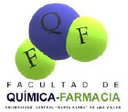Executive Secretary

VII Simposio Internacional de Química 2019
SIQ 2019
Abstract A methodology that allows to explain experimental behavior of a turn-on luminescent chemosensor is proposed and verified in 1-[(1H-1,2,4-triazole-3-ylimino)-methyl]-naphthalene-2-ol] (L1), selective to Al3+ cations. This sensor increases its emission when interacting with ion upon excitation at 442 nm, which is denoted as the chelation-enhanced fluorescence (CHEF) effect. The PET is responsible for the fluorescence quenching in L1 at 335 nm, in Ni2+/L1 at 385 nm and in Zn2+/L1 at 378 nm. In the Ni2+/L, The LMCT, from the molecular orbital of the ligand to the Ni 3dx2-y2 orbital, can contribute to the quenching of fluorescence. Based on oscillator strength, the highest luminescent intensity the L1 at 401 nm and the Al3+/L1 at 494 nm in relation to the others is evidenced. The consideration of the relative energies of the excited states, the calculation the rate and lifetime of the electron transfer deactivation is necessary to get a good description of the sensor.
Abstract A methodology that allows to explain experimental behavior of a turn-on luminescent chemosensor is proposed and verified in 1-[(1H-1,2,4-triazole-3-ylimino)-methyl]-naphthalene-2-ol] (L1), selective to Al3+ cations. This sensor increases its emission when interacting with ion upon excitation at 442 nm, which is denoted as the chelation-enhanced fluorescence (CHEF) effect. The PET is responsible for the fluorescence quenching in L1 at 335 nm, in Ni2+/L1 at 385 nm and in Zn2+/L1 at 378 nm. In the Ni2+/L, The LMCT, from the molecular orbital of the ligand to the Ni 3dx2-y2 orbital, can contribute to the quenching of fluorescence. Based on oscillator strength, the highest luminescent intensity the L1 at 401 nm and the Al3+/L1 at 494 nm in relation to the others is evidenced. The consideration of the relative energies of the excited states, the calculation the rate and lifetime of the electron transfer deactivation is necessary to get a good description of the sensor.
Sobre el ponente

MsC. Manuel Treto Suarez






